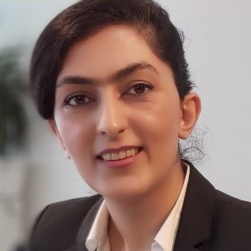Porous Materials for Sustainable Energy and Catalysis
A special issue of Crystals (ISSN 2073-4352). This special issue belongs to the section "Inorganic Crystalline Materials".
Deadline for manuscript submissions: closed (15 August 2024) | Viewed by 3324
Special Issue Editor
Special Issue Information
Dear Colleagues,
Porous Materials for Sustainable Energy and Catalysis is an international open-access Special Issue of Crystals (ISSN 2073-4352) intending to publish research publications, review articles, and short communications. The main focus of this journal is the design, improvement, and introduction of robust catalysts based on porous frameworks for sustainable Energy and catalysis. Additionally, we aim to make the catalyst's performance in chemical reactions and processes understandable for scientists in the fields of Sustainable Energy and Catalysis. Therefore, we encourage scientists to publish their experimental and theoretical explorations in detail to make it easier for new scientists in energy and catalysis to reproduce either the experimental or theoretical results. The main research areas include (but are not limited to):
- Electrocatalysis,
- Photocatalysis,
- Plasmon-enhanced porous materials,
- Nanostructured catalysts,
- Novel porous Catalysts,
- Kinetics and thermodynamics of catalytic reactions,
- Surface and active site engineering of the nanostructured materials,
- Computational catalysis,
- Computational electro- and photo-catalysis
Dr. Parisa Nematollahi
Guest Editor
Manuscript Submission Information
Manuscripts should be submitted online at www.mdpi.com by registering and logging in to this website. Once you are registered, click here to go to the submission form. Manuscripts can be submitted until the deadline. All submissions that pass pre-check are peer-reviewed. Accepted papers will be published continuously in the journal (as soon as accepted) and will be listed together on the special issue website. Research articles, review articles as well as short communications are invited. For planned papers, a title and short abstract (about 250 words) can be sent to the Editorial Office for assessment.
Submitted manuscripts should not have been published previously, nor be under consideration for publication elsewhere (except conference proceedings papers). All manuscripts are thoroughly refereed through a single-blind peer-review process. A guide for authors and other relevant information for submission of manuscripts is available on the Instructions for Authors page. Crystals is an international peer-reviewed open access monthly journal published by MDPI.
Please visit the Instructions for Authors page before submitting a manuscript. The Article Processing Charge (APC) for publication in this open access journal is 2100 CHF (Swiss Francs). Submitted papers should be well formatted and use good English. Authors may use MDPI's English editing service prior to publication or during author revisions.
Keywords
- porous materials
- catalysis
- surface reactions
- electrocatalysis
- plasmon-enhanced porous catalysts
- photocatalysis
- active site engineering
Benefits of Publishing in a Special Issue
- Ease of navigation: Grouping papers by topic helps scholars navigate broad scope journals more efficiently.
- Greater discoverability: Special Issues support the reach and impact of scientific research. Articles in Special Issues are more discoverable and cited more frequently.
- Expansion of research network: Special Issues facilitate connections among authors, fostering scientific collaborations.
- External promotion: Articles in Special Issues are often promoted through the journal's social media, increasing their visibility.
- Reprint: MDPI Books provides the opportunity to republish successful Special Issues in book format, both online and in print.
Further information on MDPI's Special Issue policies can be found here.





